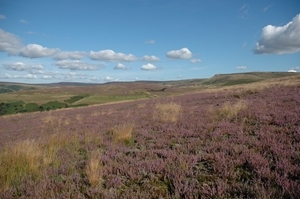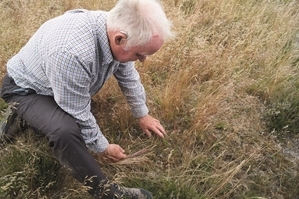 Those who use the start of the grouse season as another excuse to call for an end to driven shooting have yet to suggest an alternative way of paying for the management of our precious moorland. Given the current dire economic climate, it is even less likely that the government could afford to pick up the bill, and the charitable sector is struggling. To many, the Glorious Twelfth is synonymous with our moorlands, but for those who manage the moors, it’s one of 365 days they spend each year ensuring our heather-clad hills are there for all to enjoy. Ending private land managers’ incentive to invest in conservation risks losing swathes of internationally important heather moorland and the assemblage of rare wildlife that depends on it.
Those who use the start of the grouse season as another excuse to call for an end to driven shooting have yet to suggest an alternative way of paying for the management of our precious moorland. Given the current dire economic climate, it is even less likely that the government could afford to pick up the bill, and the charitable sector is struggling. To many, the Glorious Twelfth is synonymous with our moorlands, but for those who manage the moors, it’s one of 365 days they spend each year ensuring our heather-clad hills are there for all to enjoy. Ending private land managers’ incentive to invest in conservation risks losing swathes of internationally important heather moorland and the assemblage of rare wildlife that depends on it.
In return for a few day’s shooting every year, grouse moor managers put huge amounts of their own time and resources into conservation in the uplands. They are in it for the long term, their commitment ensuring that a piece of land that has been painstakingly restored is not suddenly abandoned to revert to bracken, scrub or grass monoculture when a public or charitable funding stream dries up.
The beautiful sight of heather in bloom at this time of year is no accident, but the result of gamekeepers working all year round to protect and rejuvenate the plant life. Among other measures grouse management helps pay for:
- Clearing bracken monocultures and replacing them with a range of moorland plants.
- Managing the sheep and cattle conservation grazing to create the optimum conditions for heather, sphagnum moss, cotton-grass and other peat-forming plants, which in turn provide food for birds and mountain hares.
- Controlled ‘cool’ burning of the old heather in winter, which ensures new growth, reduces the amount of fuel on the hill and creates thousands of mini firebreaks, greatly reducing the risk of devasting wildfire.
- Rewetting thousands of grips or drainage ditches originally dug to dry out the moors for agriculture and pioneering ways to keep water on the hills to prevent flooding downstream.
- Managing predation of foxes and crows, which threaten endangered bird species such as curlew, lapwing and golden plover.
 Geoff Eyre from Hope Valley, Derbyshire, is one of the grouse moor managers featured in a new collection of case studies from the Game & Wildlife Conservation Trust titled Moorland Conservationists. He has devoted the past 30 years to restoring an incredible 40 square miles of moorland across the UK, much of the work done on a voluntary basis, plus consulting on a further area that would be the size of the Isle of Man.
Geoff Eyre from Hope Valley, Derbyshire, is one of the grouse moor managers featured in a new collection of case studies from the Game & Wildlife Conservation Trust titled Moorland Conservationists. He has devoted the past 30 years to restoring an incredible 40 square miles of moorland across the UK, much of the work done on a voluntary basis, plus consulting on a further area that would be the size of the Isle of Man.
He said: “Moorland work is my passion. Over 15 years I restored over 4,500 acres of upland plants in the Peak District alone. With gamekeepers helping out we managed to keep costs under £500,000 for what would have cost conservation bodies about £8 million. Here in the Peak District I have recently cleared bracken surrounding 4.25 miles of my moorland footpaths that would have cost £200k and grown sphagnum moss across 20 hectares, which would have cost £5.5k per hectare.
“I put in at least £40k worth of work a year on my own little moor and we have had great results, with some of the highest densities of skylarks and curlews in the UK. Over the past eight years I have spent £80k on part-time predator control and £36k to repair stone walling. In terms of voluntary work, I restored a further 2,200m of wall, cleared bracken and reseeded the moor using my own equipment. Added together, all this would come to more than £500,000.
“Furthermore, if it had not been for keepers and farmers with their firefighting equipment paid for by those who grouse shoot, we would have seen wildfires in 2020 on a scale larger than Stalybridge, which cost £30 million.
“Those that are against shooting really do not understand how much keepers, farmers and the local community puts into looking after this landscape. At this time of year members of the public come to my moor to enjoy the wildflowers in bloom. But who would pay for its upkeep if driven grouse shooting were to end?”
You can read more about Geoff’s incredible conservation work and that of other grouse managers in Moorland Conservationists, available to buy online or in print at gwct.org.uk/shop.